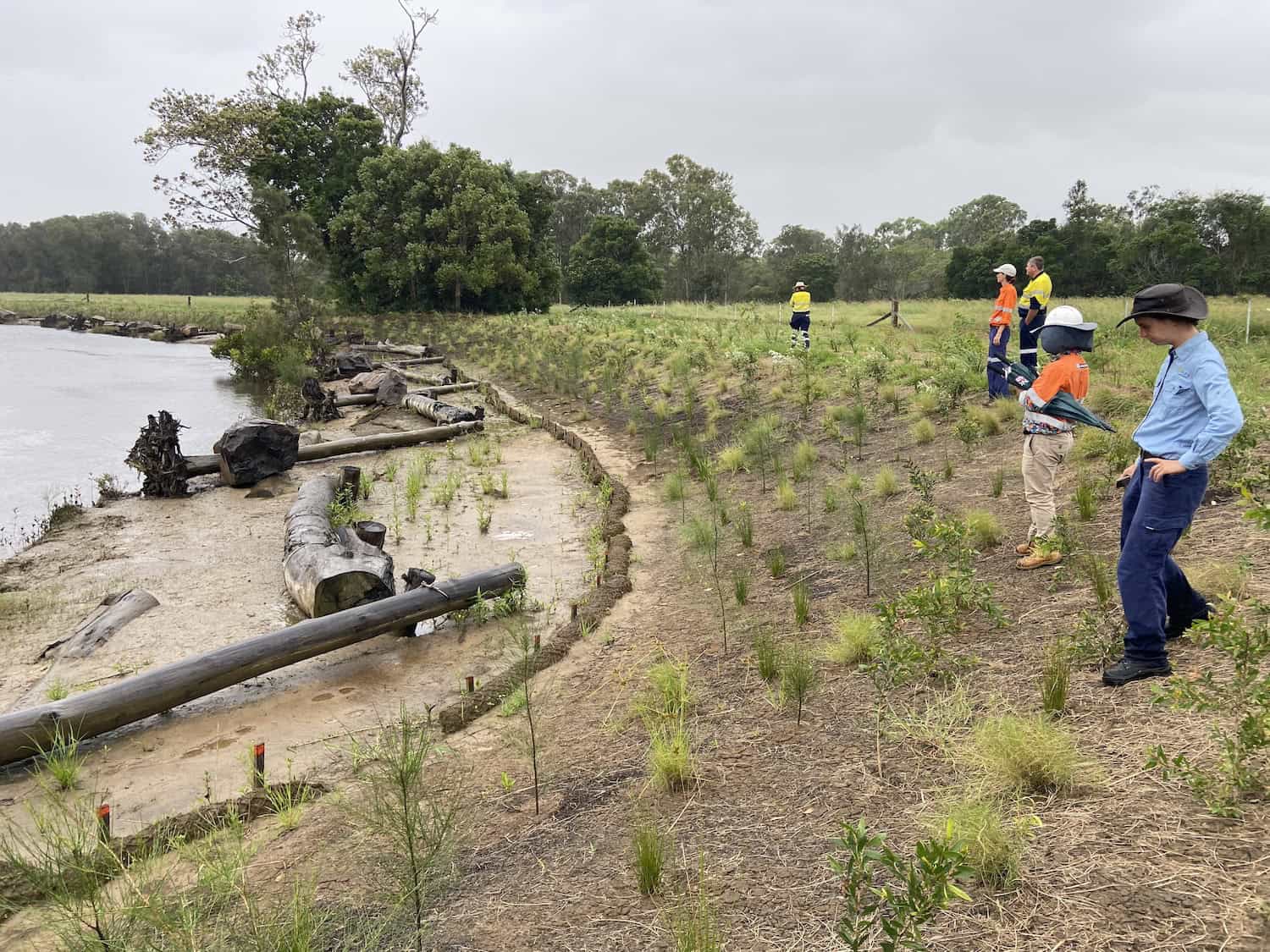A collaboration between UnityWater and regional NRM organisation Healthy Land & Water will see parts of the Caboolture River restored through stabilising the riverbank and re-establishing vegetation.
9 sites, in both tidal estuaries and upper catchment have been identified for works that will improve the river’s long-term resilience to flooding while providing new habitats for native wildlife. By reducing streambank erosion, the project will reduce sediment and nutrients from entering the waterway and Moreton Bay.
Works undertaken by Healthy Land & Water include reprofiling eroded banks to create stable areas for new mangrove forests and riparian revegetation as well as protecting new mangrove saplings from boatwash.
The work helps Unitywater – who funded the project – to achieve its goal of net zero nutrients diverted to waterways by 2050. Healthy Land & Water was engaged by Unitywater to lead onground works and bring together the diverse stakeholder groups collaborating on the project.
What’s been achieved to reduce erosion in Caboolture River:
- Works across 9 sites over 18 months.
- 2.4km of bank stabilisation.
- 1.6 tonnes nitrogen abatement per year.
- 30,000 seedlings planted through revegetation programs

Mangrove propagules have established on the banks of Caboolture River
Why this erosion control work is important
When creeks and rivers erode, sediments and other pollutants run into waterways. A reduction in water quality not only impacts lifestyle and visual amenity, but impacts the many plants and animals which live in and near our waterways. We all want clean, healthy rivers and creeks and this project is helping to deliver just that.
Most nutrients that are washed into river systems come from two main sources: treated sewage, and riverbank erosion. Treated sewage is directly connected to population growth. If the population grows, the sewage waste – and therefore nutrients washing into rivers – increases.
According to population growth forecasts, the amount of nutrients that will end up in this catchment’s sewage systems will increase significantly in the next 30 years.
Offsetting this increase in nutrients by preventing soil and other pollutants from entering the Caboolture River is a lower-cost alternative to upgrading sewage treatment infrastructure.
Find out more about this project at Healthy Land & Water’s website.
